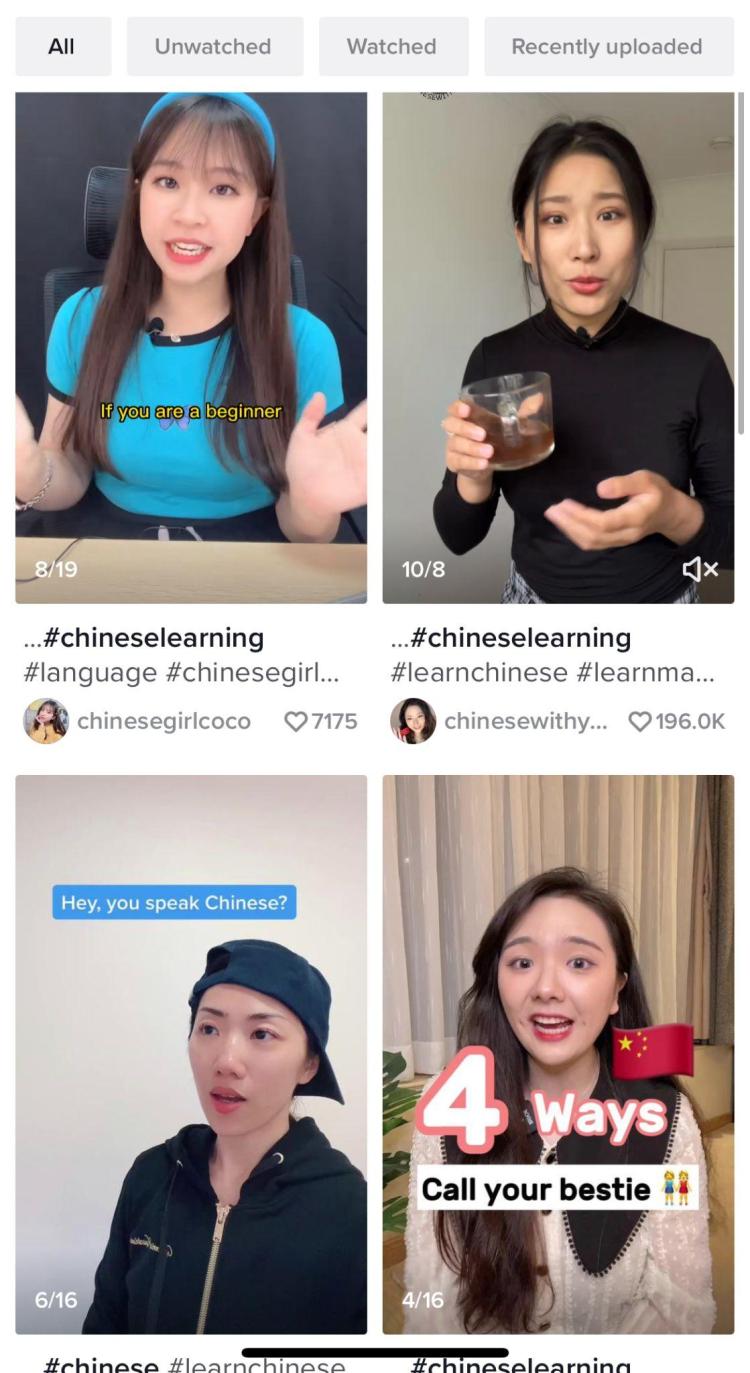Topics such as "Teaching Chinese to foreigners on TikTok, you can make $2000 per day," and "You will make a fortune by selling Chinese e-learning classes on TikTok" continue to appear on Chinese social media platforms.
Some MCN companies advertised that "even if you are not yet qualified to teach Chinese as a foreign language, you may still join us,” noting that their businesses have been rapidly developing and require a fresh infusion of energy.
It appeals to Chinese teachers, especially since many have lost their jobs due to the crackdown on K-12 after-school programs. Enticed by these advertisements, many with no prior Chinese teaching experience, such as stay-at-home moms and college students, begin to believe it may be a decent way to supplement their income and are eager to give it a try.
However, the reality may not be as pleasant as it may seem.
TikTok has a wealth of Chinese learning content produced by various creators. Some of them have received a lot of likes and comments for their engaging content settings. The hashtags #learnchinese and #chineselearning have attained 1.8 billion and 27 million views, respectively.


This data is similar to Korean language learning on the short video platform. Driven by the rising global popularity of K-pop, K-dramas, and films, Korean is the second-fastest-growing language in the world after Hindi, according to the language learning app Duolingo. #learnkorean and #koreanlearning have generated 1.8 billion and 62.9 million views, respectively.
Though China may not have as much of an impact on global pop culture as South Korea, it nonetheless attracts a lot of people. Southeast Asian countries such as Vietnam and Thailand, as well as other countries that have joined China's Belt and Road Initiative (BRI), have a high demand for Chinese language learning, Cao Fang, the founder of the online Chinese education platform HiChinese, told the press.
Formerly known as One Belt One Road (Chinese: 一带一路), the Belt and Road Initiative (BRI) is a global infrastructure development initiative launched by the Chinese government in 2013. As of August 2022, 149 countries had joined up for the program, including Pakistan, Bangladesh, and Kazakhstan, among others.
While demand is high, unfortunately, users from the majority of the aforementioned regions have relatively restrictive budgets due to low per capita income. "Although they believe learning Chinese may bring them more job opportunities given China's rising power in the global economy, most of them just want to get away with free learning. As a result, the conversion rate is low." Jenny, who runs a TikTok Chinese teaching account, stated.
For example, by the end of 2022, Pakistan’s GDP per capita is expected to reach $1,250, Vietnam’s GDP per capita is expected to reach $2,070, and Bangladesh’s per capita GDP is expected to reach $1,750. Generally, the figure for per capita income is lower than that for per capita GDP.
Therefore, the price of the courses cannot be excessively high—the majority of recorded video courses sold through TikTok cost less than $20. Both the poor conversion rates and the low unit pricing imply that it is not easy to earn money, at least not as advertised. “I used to have an account with over 8000 followers, most from Southeast Asia, but no one, literally no one, was willing to buy my paid courses,” she said. “It's pretty common. I know someone who has almost 200k followers on TikTok but only gets 3 orders each month.”
So what motivates MCN companies to continue aggressively recruiting new creators? Yang, who has 7 years of experience in teaching Chinese as a foreign language and has worked with MCNs, discovered their strategies.
Typically, these companies charge 10,000 to 20,000 yuan per creator, which includes helping them to download TikTok from overseas Apple Stores (because TikTok is blocked in mainland China), configuring virtual private networks (VPNs), and giving some general suggestions on making teaching videos.
But in practice, these costs are almost negligible. Moreover, it won't help you get more visitors like the ad suggests because TikTok controls how the traffic is allocated, and it doesn't guarantee you can make money. Most people spend nothing and get nothing in return, while MCN corporations can make a lot by charging creators so-called training fees, according to the trainer.
On Xiaohongshu, a Chinese social networking platform particularly well-liked by females, you may find people claiming that after paying and following MCN's instructions, they were unable to monetize their TikTok accounts. Nonetheless, similar ads continue to appear, luring additional people to enroll.
“Anyway, don't expect too much; only a few top performers can earn a decent amount of money selling courses on TikTok. If you're serious about making money as a teacher, you should sign up with a reputable online education site like Duolingo, LingoAce, or others,” Yang suggested.


Despite the craze for Chinese language teaching fueled by bluff advertising being unsustainable and unhealthy, there's no denying that TikTok is still a great channel for educators to connect with young people, especially when microlearning has taken off among this generation.
Since most Gen Z have smartphones at their fingertips at all times, e-learning is so accessible to them, and they enjoy being able to study in bite-sized chunks that fit into their "busy schedules".
During the pandemic, TikTok launched a $50 million Creative Learning Fund that specifically supports creators with the production of learning content, provides resources for learners, and introduces emerging teachers to the TikTok platform.
Looking into the future, the social platform has the potential to play a major role in education, both as a method for teachers to add diversity and interest to the classroom or online courses and as a tool to provide educational content to a wider audience.
Photo by 五玄土 ORIENTO on Unsplash
